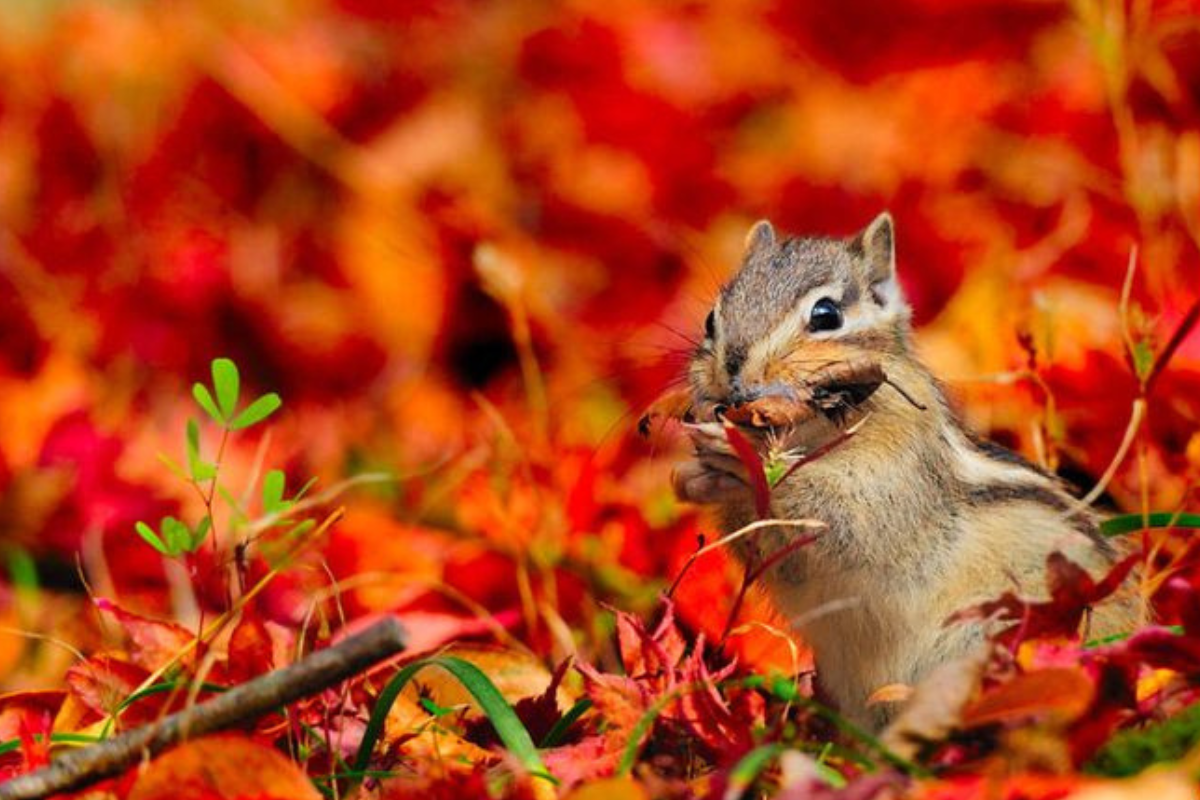By Scott Smith
There’s a beautiful patch of flowers outside the building that houses Friends of Animals’ offices in Darien, CT., thick with coneflowers, coreopsis, black-eyed susans and other perennials. It’s a delight to take a work break on a summer day and spend a few minutes outside eyeing the colorful blooms abuzz with pollinating butterflies and bees.
In the fall, goldfinches alight on the spiky seedheads of the purple coneflowers. I’ve spotted at least two pairs of the small songbirds but there are probably more, as the sidewalk garden had enough thistles to fatten up a whole flock for winter. Finches are very flighty, so I would stand back as they flitted back and forth from the slender stalks to the stately red oak that Friends of Animals has fought so hard to save from the saws of the road crews who want to take it down.
Sadly, no one was around to save the flowers from that same sad fate a week ago, as a crew of landscapers descended on the garden for “fall cleanup”—cutting off every single stem just a few inches above the ground and blowing the ground clean of any plant debris or leaf litter. Yes, the garden looks tidier, but the finches are gone for good.
The beauty of flowers continues long after the blooms have faded. Their seeds and stems provide vital food and habitat through the fall and winter not just for birds and other wildlife but for hundreds of species of native bees, butterflies and other beneficial insects. Of the 4,000 species of native bees, 30 percent overwinter in the woody stems of perennial flowers and other types of meadow plants.
Gardeners around the country are recognizing the ecological value of leaving flower stalks standing and the leaves where they fall. Call it the flip side of the No Mow May movement that has inspired many homeowners to let the grass grow and springtime weeds like clover, dandelions and wild violets to flower and provide a feast of nectar for emerging pollinators.
The “leave leaves for the bees” trend is also in part a backlash to what’s become the bane of leaf-peeping season: Noisy, noxious leaf blowers. Not only do the infernal machines emit an appalling amount of toxic fumes, when you’re using leaf blowers, you’re blowing away all the life in your lawn — any firefly, beetle or spider.
The science behind leaving the leaves
There was a time every fall in my own backyard garden when I’d deadhead the flowers and rake the leaves from the flower beds onto the grass lawn, where I would mow and mulch them. But once you learn that such delicate creatures as luna moths and swallowtail butterflies disguise their cocoons and chrysalises as dried leaves, it gets harder to go scorched earth with fall cleanup.
The science in support of delaying or even avoiding a fall yard cleanup altogether is clear. According to the Xerces Society for Invertebrate Conservation, “The vast majority of butterflies and moths overwinter in the landscape as an egg, caterpillar, chrysalis or adult. In all but the warmest climates, these butterflies use leaf litter for winter cover.”
“Beyond butterflies, bumble bees also rely on leaf litter for protection. At the end of summer, mated queen bumble bees burrow only an inch or two into the earth to hibernate for winter,” Xerces advises. “There are so many animals that live in leaves: spiders, snails, worms, beetles, millipedes, mites, and more—that support the chipmunks, turtles, birds and amphibians that rely on these insects for food.”
So when should you cut back your perennials and ornamental grasses? Eco-garden expert Douglas W. Tallamy advises keeping the flowers standing through February. “The seeds that those plants make is what sustains our juncos and our white-throated sparrows and all the birds that move south. When we deadhead and cut them off in the fall, we’ve removed that seed stock.” It also depends on your local climate. Studies have found that it’s the soil temperature, not the air temperature that matters, according to Better Homes & Gardens. “Once soil temperatures stay at or above 50°F, microbial activity increases in the soil and plants and many creatures (e.g., overwintering insects, spiders and frogs) start to wake up and become active.”
“Our gardens can contribute to both the climate and biodiversity crisis by harnessing more garden waste,” says Per Gundersen, a professor of forest ecology at the University of Copenhagen. “I also think that it will lead to a little less gardening in the long run. And then it’s more fun, because there will be a greater abundance of life around the garden. We just need to dare to let go of control and make more room for nature.”
Less work and more fun? And more wildlife in my more natural garden? I’m down with that. And let’s hope that come next fall, the landscaping crews everywhere will also get the memo.

